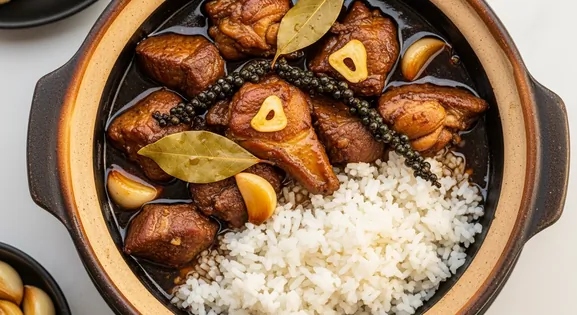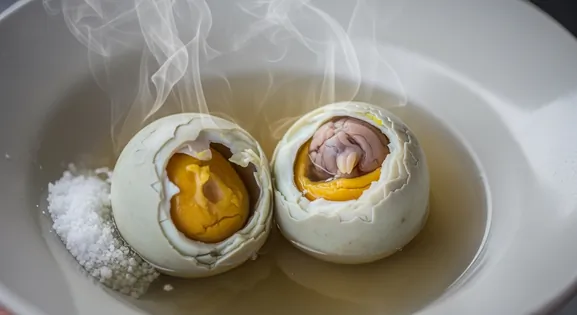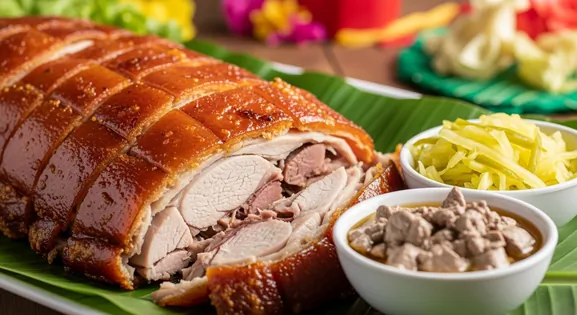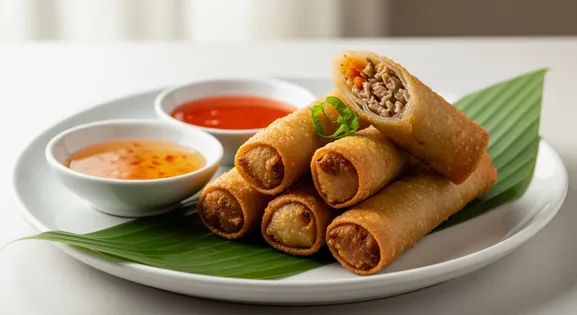Banana Cue in Manila
Banana Q (Saging na Saba)
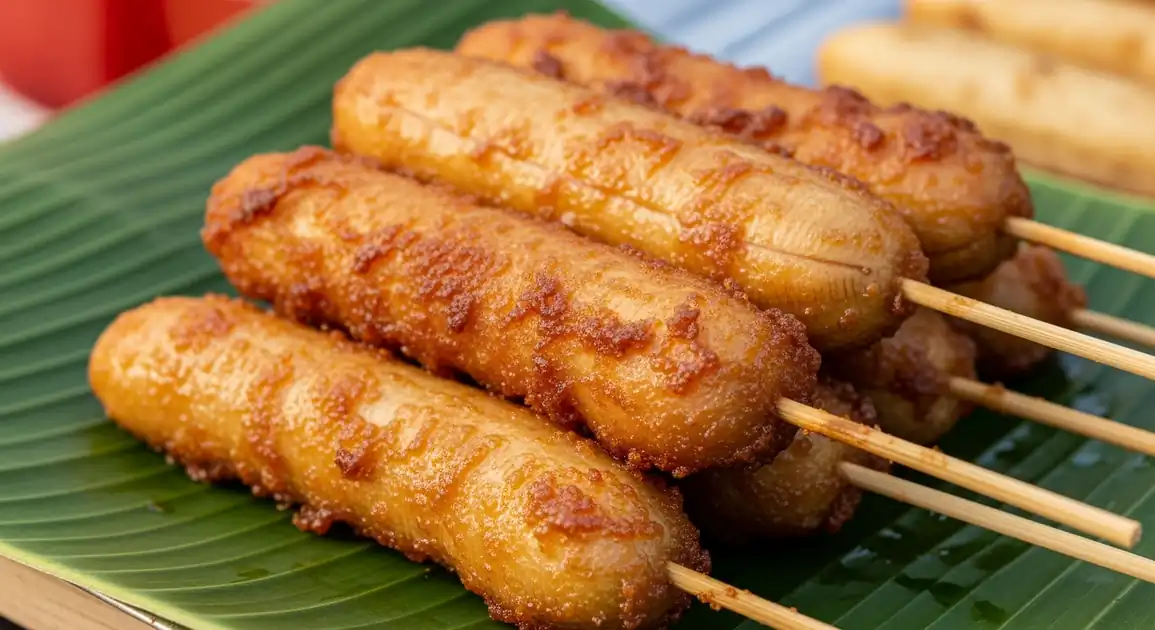
A Beloved Local Dish
Wandering through Manila's vibrant streets, the aroma of caramelized bananas is irresistible. Banana cue, a simple yet iconic Filipino snack, offers a sweet escape from the urban bustle. It's a taste of home for locals and a delightful discovery for travelers, embodying the city's dynamic culinary spirit.
New to Banana Cue? Learn all about its history in our complete guide.
Local Significance
Local Significance
In Manila's fast-paced environment, banana cue represents an accessible taste of Filipino tradition amidst urban development. It's an affordable luxury that connects city dwellers to culinary heritage regardless of social status.
Eating Customs
- Manila's on-the-go lifestyle means banana cue is often eaten while walking or commuting.
- Some Manila vendors provide small plastic bags to place the skewer in after eating.
- In office areas, colleagues might take turns buying a batch to share during merienda breaks.
Unique Preparations of Banana Cue
Premium Banana Cue
Upscale versions found in Manila food courts featuring additional toppings like crushed nuts, caramel drizzle, or even a scoop of ice cream for eat-in customers.
Mini Banana Cue Buckets
Some innovative Manila vendors cut Saba bananas into bite-sized pieces before frying and serve them in small paper cups or buckets for easier eating while commuting.
Cheese Banana Cue
A modern Manila fusion featuring a slice of cheddar or quick-melt cheese inserted into a slit in the banana before frying, creating a sweet-savory combination.
Langka Surprise Banana Cue
A Manila specialty where the banana is stuffed with jackfruit before being skewered and fried, creating a juicy surprise inside.
Pro Tips for an Authentic Experience
For the freshest and most affordable banana cue, head to the University Belt (Sampaloc/Quiapo) during merienda hours (3-5 PM). Vendors here cater to students, ensuring high turnover and competitive prices.
If you want your banana cue piping hot and freshly fried, don't hesitate to politely ask the vendor "Bagong luto po ba?" (Is it newly cooked?). They'll often fry a fresh batch for you.
The sweet, sticky banana cue is best enjoyed with a cold beverage to balance the richness. Look for local "sago't gulaman" (tapioca and jelly drink) or a simple bottled water from the same vendor.
A Guide to Finding Banana Cue
University Belt
High concentration around FEU, UST, San Beda, and other universities in Sampaloc/Quiapo area.
España Boulevard, Morayta, Dapitan Street, Lacson Avenue
Afternoon (3 PM - 5 PM), Evening class dismissal (8 PM - 9 PM)
Divisoria/Quiapo/Binondo
These bustling shopping districts are a treasure trove of street food, with numerous vendors offering banana cue along their vibrant, smaller side streets and market entrances.
Divisoria Market, Quiapo Church, Lucky Chinatown Mall
Morning (9 AM - 11 AM), Afternoon (2 PM - 5 PM)
Makati CBD/BGC Periphery
Vendors position near office buildings but away from strict commercial areas during lunch breaks and after office hours.
MRT Stations, PNR Buendia Station, Side streets near Ayala Avenue
Lunch (12 PM - 1 PM), After work (5 PM - 7 PM)
LRT/MRT Stations
Vendors strategically cluster near major transit points and train stations across Manila to efficiently catch commuters during the busy morning and evening rush hours.
Doroteo Jose, Recto, Cubao, EDSA Stations
Morning rush (7 AM - 9 AM), Evening rush (5 PM - 7 PM)
Vendor Tips
- Manila vendors often serve multiple fried banana variants - try turon (wrapped) or maruya (fritters) alongside banana cue for comparison.
- Some Manila vendors now offer 'special' versions with added toppings or fillings - look for signs saying 'Special Banana Cue'.
- During rainy season, look for vendors with covered stalls to ensure the frying oil hasn't been contaminated with rainwater.
- Vendors with multiple burners/woks typically fry different products in separate oils, maintaining better flavor integrity.
Authentic vs Imitation: The Telltale Signs
What to Look For
-
Vendors actively frying fresh batches, especially during peak merienda hours (2 PM - 5 PM) near schools, offices, or transport hubs.
Freshly fried is essential for taste and ensures it's hot. High traffic areas often have fresher batches.
-
Clear to light golden frying oil, actively bubbling.
Indicates relatively clean oil and proper cooking temperature.
-
Bananas (Saba variety) that look ripe but firm, fried to a golden brown with evenly caramelized sugar.
This indicates the use of good quality ingredients and proper cooking technique, ensuring a delicious and well-prepared snack.
-
Clean preparation area, separate handling of money and food if possible.
Reduces cross-contamination risk in busy Manila street settings.
What to avoid
-
Large piles of pre-fried Banana Cue sitting out for long periods, especially uncovered.
Likely cold, potentially attracting flies/dust, and texture will be poor.
-
Very dark brown or black, smoking frying oil.
Indicates overused oil, affects taste and potentially safety.
-
Bananas that are burnt, blackened, or have crystallized sugar patches instead of smooth caramel.
These indicate poor cooking practices or old batches, resulting in a bitter taste and unpleasant texture.
-
Vendors in extremely polluted or dusty locations (e.g., beside heavy traffic on EDSA) without adequate food protection.
This poses a significant risk of environmental contamination, affecting the hygiene and safety of the food.
Practical Details for Enjoying Banana Cue
Dietary Information
Important Note for Travelers: Your safety is our priority. Below are the common allergens associated with the traditional preparation of this dish. However, recipes and ingredients can vary significantly between establishments. Always confirm all ingredients directly with the food vendor before ordering, especially if you have a severe allergy.
Dietary Suitability
Price Guide
Budget Tips
- Standard street vendor banana cue costs 12-15 PHP per piece in most Manila neighborhoods.
- University areas like UST, UP Diliman, and FEU often have slightly cheaper options (10-12 PHP) targeting student budgets.
- Mall food court or specialty stall versions with premium ingredients can cost 20-30 PHP.
- Chinatown (Binondo) vendors sometimes offer 'tawad' (discount) for multiple purchases.
- Avoid tourist-targeted vendors in Intramuros or Rizal Park where prices may be inflated to 25-30 PHP.
Serving & Seasonality
Served skewered on bamboo sticks with small plastic or paper wrap at the bottom to catch drips. Manila vendors often display them upright in specialized standing racks or glass display cases.Best Times to Enjoy
- Afternoon: Prime merienda time from 3 PM - 5 PM when office workers and students seek quick snacks.
- Morning: Available from 7 AM - 10 AM, popular with commuters as a quick breakfast with coffee.
- Evening: Evening vendors operate from 6 PM - 9 PM, especially in busy night markets and commuter areas.
Seasonal Availability
Available year-round with consistent supply, though rainy season (June-October) may reduce vendor numbers temporarily during heavy downpours.
The Art of Ordering
When ordering banana cue in Manila, observe the vendor's frying activity; a fresh batch is always best. Don't hesitate to point to the specific piece you want from the display. If buying multiple, you might ask 'May tawad po ba?' for a small discount, especially in markets like Divisoria. Remember to ask for a small plastic bag ('pambalot') to hold the skewer, making it easier to eat on the go without sticky fingers.
Mastering the Experience
Getting Fresh Banana Cue During Merienda Hours in Manila
Maximize your chances of getting hot, fresh Banana Cue during the peak snack time.
- Target areas with high foot traffic between 2 PM and 5 PM: outside schools/universities (e.g., University Belt), office buildings (e.g., Makati CBD, Ortigas), major jeepney/bus stops.
- Look for vendors with a visible frying setup who are currently cooking or have just finished a batch (steam rising).
- Observe customer flow; a queue or steady stream of buyers is a good sign.
- Ask 'Bagong luto po ba?' (Is it newly cooked?) if unsure.
- Buy only what you can eat immediately to enjoy it hot and crispy.
How to Eat Banana Cue Without Making a Mess in Manila
Learn practical tips for handling this delicious, sticky treat while navigating Manila's busy streets, ensuring a clean and enjoyable experience.
- Ask the vendor for a small piece of paper or plastic ('pambalot') to hold the bottom of the skewer.
- Hold the skewer firmly and eat directly from it, biting off pieces of the banana.
- Be mindful of the hot, sticky caramel; let it cool slightly if just out of the fryer.
- If the caramel is very sticky, use the paper to shield your fingers.
- Dispose of the bamboo skewer properly in a trash bin after finishing.
Our Commitment to Quality
At Tasteplorers, our mission is to provide the most accurate and useful travel information in the world. To achieve this, all content on this site is created through our unique editorial framework. We utilize leading AI research tools, guided by our proprietary prompts, and a multi-stage validation process. This entire system is overseen by our editorial team to ensure everything we publish meets our high standards for accuracy, cultural nuance, and practical value for travelers.
Learn more about our Editorial Process and our Mission.
Countries
Explore regions
Europe
Discover Europe's diverse culinary landscape, from Mediterranean flavors to hearty Alpine fare. Learn to navigate markets, decode menus, and eat like a local.
Latin America & Caribbean
Discover the vibrant cuisines of Latin America & the Caribbean. Our expert guide covers everything from Mexican street food to Peruvian ceviche and market tips.
Oceania
Explore Oceania's diverse food scene. Learn about Polynesian earth ovens, Fijian feasts, and the vibrant café culture of Australia and New Zealand.
Southeast Asia
Explore Southeast Asia's diverse food cultures from Thailand to Vietnam. Get expert tips on navigating spice levels, choosing quality vendors, and understanding the rich traditions of the region.
